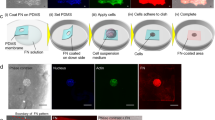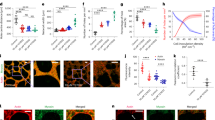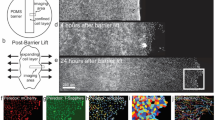Abstract
Cells comprising a tissue migrate as part of a collective. In order to coordinate collective multi- cellular migration, each constituent cell integrates local information including chemical signals and mechanical stresses. The boundary between a constituent cell and its immediate neighbors comprises cell-cell junctions and cryptic lamellipodia, but the state of local mechanical stress exerted at that boundary has not been accessible experimentally. As such it is not clear how collective mechanical processes could be coordinated over length scales spanning large multi-cellular assemblies. We report here maps of the stresses exerted within and between cells comprising a monolayer. Within the cell sheet there arise unanticipated fluctuations of mechanical stress that are severe, emerge spontaneously, and ripple across the monolayer. These fluctuations define a rugged stress landscape that becomes increasingly heterogeneous, sluggish, and cooperative with increasing system density. Within that persistently rugged stress landscape, local cellular migrations are found to migrate along local orientations of maximal principal stress. Migrations of both endothelial and epithelial monolayers conform to this behavior, as do breast cancer cell lines before but not after the epithelial-mesenchymal transition. In these diverse cell types, our data indicate that collective migration is governed by a simple but unifying physiological principle: neighboring cells join forces to transmit appreciable intercellular normal stress across local cell-cell junctions, but migrate along orientations of minimal intercellular shear stress.
Similar content being viewed by others
Article PDF
Author information
Authors and Affiliations
Corresponding author
Rights and permissions
About this article
Cite this article
Tambe, D., Hardin, C., Fredberg, J. et al. Collective cell guidance by cooperative intercellular forces. Nat Prec (2010). https://doi.org/10.1038/npre.2010.5405.1
Received:
Accepted:
Published:
DOI: https://doi.org/10.1038/npre.2010.5405.1



